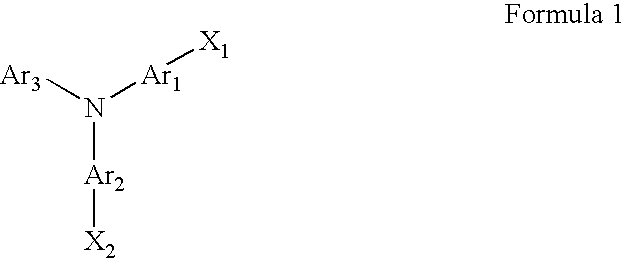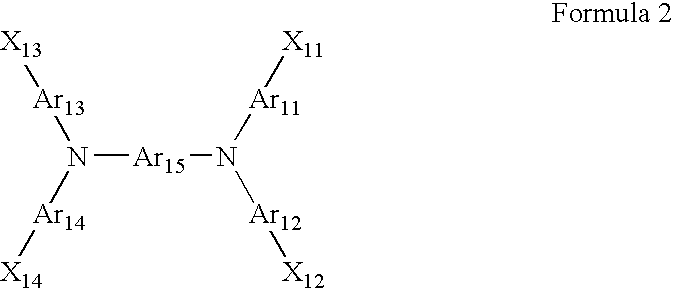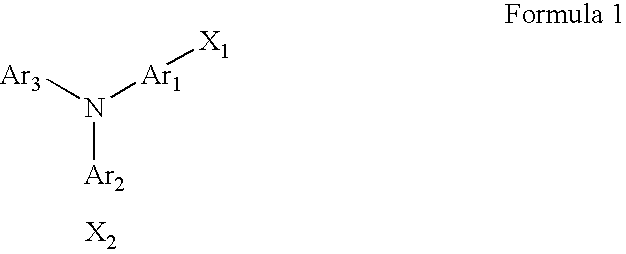Photoelectric conversion element and solar cell
- Summary
- Abstract
- Description
- Claims
- Application Information
AI Technical Summary
Benefits of technology
Problems solved by technology
Method used
Image
Examples
example 1
[0103]Preparation of Photoelectric Conversion Element 1
[0104]Titanium oxide paste having a particle size of 18 nm was coated by a screen printing method on a glass substrate given electroconductivity by fluorine-doped tin oxide (FTO). The paste was dried by heating at 60° C. for 10 minutes and burned at 500° C. for 30 minutes to obtain a titanium oxide thin layer having a thickness of 5 μm.
[0105]Dye 1 was dissolved in ethanol to prepare a solution having a concentration of 3×10−4 moles / l. The FTO glass substrate on which the titanium oxide paste was coated and burned was immersed in the above solution for 16 hours at room temperature for performing dye adsorption to prepare a semiconductor electrode.
[0106]As the charge transfer layer (electrolysis solution), a. 3-methoxypropionitrile solution containing 0.6 g / l of 1,2-dimethyl-3-propylimidazolium iodide, 0.1 moles / l of lithium iodide, 0.05 moles / l of iodine and 0.5 moles / l of 4-(t-butyl)pyridine was used. A platinum plate was used f...
PUM
| Property | Measurement | Unit |
|---|---|---|
| Acidity | aaaaa | aaaaa |
| Photoelectricity | aaaaa | aaaaa |
| Semiconductor properties | aaaaa | aaaaa |
Abstract
Description
Claims
Application Information
 Login to View More
Login to View More - R&D
- Intellectual Property
- Life Sciences
- Materials
- Tech Scout
- Unparalleled Data Quality
- Higher Quality Content
- 60% Fewer Hallucinations
Browse by: Latest US Patents, China's latest patents, Technical Efficacy Thesaurus, Application Domain, Technology Topic, Popular Technical Reports.
© 2025 PatSnap. All rights reserved.Legal|Privacy policy|Modern Slavery Act Transparency Statement|Sitemap|About US| Contact US: help@patsnap.com



